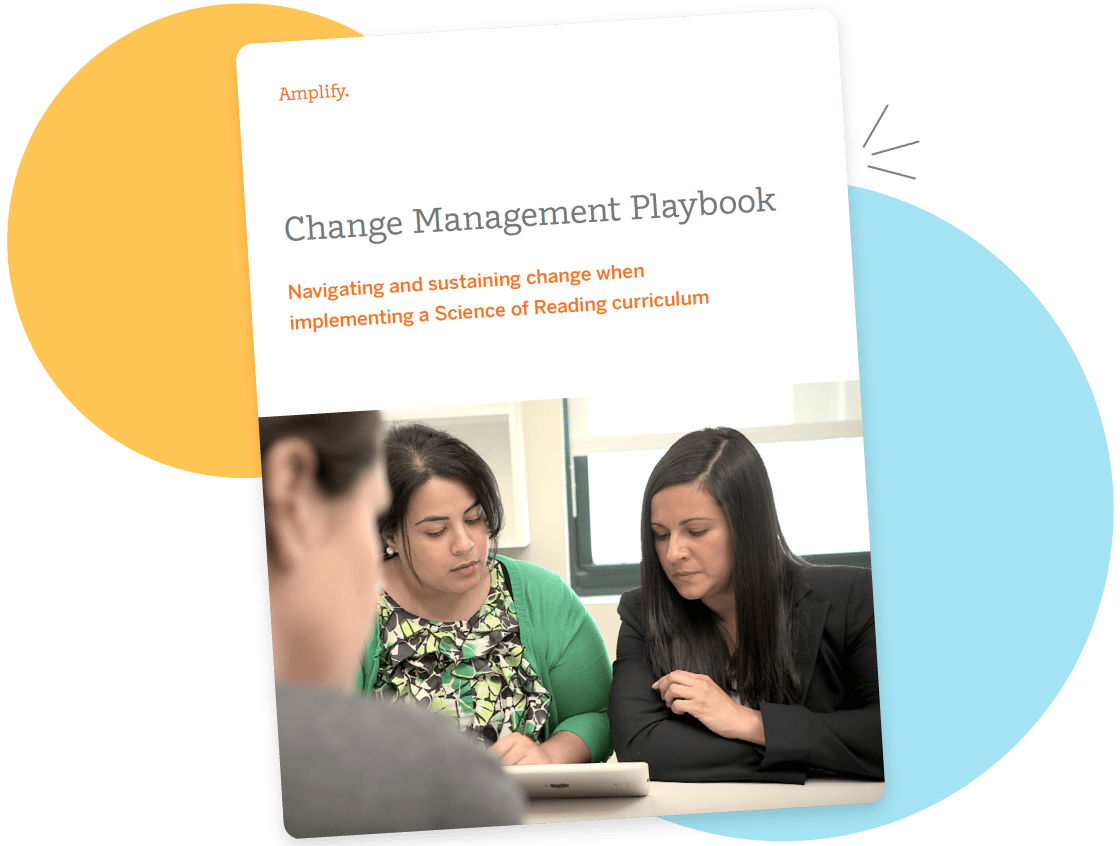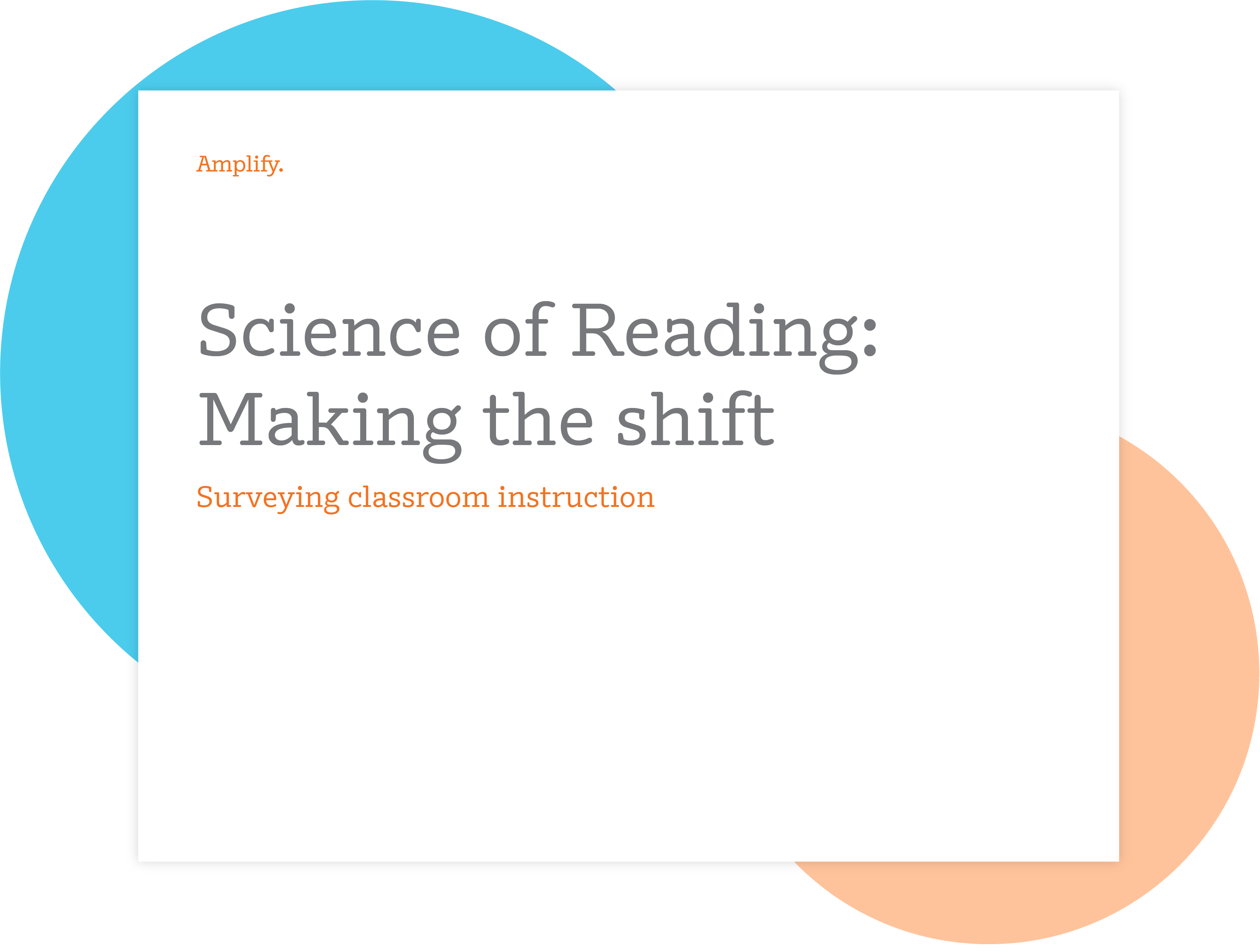
We know how children learn to read, and we know how to teach children to read—all thanks to the Science of Reading. That’s why it’s so important to use literacy programs grounded in data. But we also know that the process of shifting to data-supported literacy instruction is a whole science unto itself!
Fortunately, we know not only how to to drive instruction, but also how to use it to manage and drive successful educational change. In this post, we’ll explore the role data can play in implementing a new curriculum, which data to study at each phase of integration, and which assessments you can use to capture the data you need.
The power of data-based instruction and change management
“The Science of Reading represents a big shift in what folks are doing,” Sara Thornton, a reading interventionist with Denver Public Schools in Colorado.
“It’s a shift at the teacher level, it’s a shift at the school level, and it’s a shift at the district level. It takes a whole system.”
That’s why data is crucial.
To successfully navigate this seismic a shift, you need to anchor yourself in all kinds of data: literacy data, professional practice data, implementation data, and student performance data.
This data allows you to personalize instruction, track development, and evaluate your teaching strategies at the classroom level—and your implementation at the school or district level. It also guides decision-making, ensuring that your new curriculum is not just well-intended, but well-executed and effective.
Using data to drive instruction, implementation, and more
Here we’ll give you a glimpse at the types of data that can guide you through each stage of change.
Stage 1: Exploration. This is where stakeholders gather information, make the case for change, and begin to build buy-in.
To guide your efforts, you’ll need to collect the following types of data:
- Baseline literacy data that shows where students are starting from, specifically in these foundational skills: phonemic awareness, phonics, fluency, vocabulary, and comprehension.
- Professional practice data to help you gauge educators’ current methods and understanding around the Science of Reading. This data can come from knowledge surveys, classroom observation forms, and more.
- Resource analysis data to help you understand the instructional tools you’ll need, in the context of relevant budget constraints.
Stage 2: Adoption. At this stage, you and your teams will evaluate, purchase, and pilot programs aligned with Science of Reading standards. We recommend tracking the following essential data measures alongside rubric-based resource evaluations:
- Literacy skill acquisition data such as unit tests, universal screening assessments, and formative daily/weekly assessments that will help you gauge the effectiveness of your piloted program.
- Stakeholder feedback that reflects the school community’s response to the program such as surveys; interviews; and conversations with teachers, family members, and district-level educators.
- Usage data, which is readily available in curricular resources with digital components, e.g. How are teachers and students using the program? How often do they log on, access given resources, etc.?
Stage 3: Initial implementation. Here, the newly adopted resources are in place and teachers begin to shift their practices. The right data in this phase will help you monitor the fidelity of implementation and track student growth. The following types of data are key:
- Instructional practice and delivery data such as lesson plan analyses, observation, usage logs, and more to show how classrooms are applying the new curriculum and practices.
- Student performance outcomes to measure student mastery. Data types include formative and summative unit assessments and progress monitoring.
Stages 4–5: Full operation, innovation, and sustainability. Here’s where you see the Science of Reading come to fruition, and where you build systems to maintain student growth. The data collected in earlier stages remains essential for guiding you through these final phases. It will serve as a touchstone as you gather and analyze additional data to help you make regular adjustments and modifications to your programs. We recommend continuing to monitor student progress, deepen your growing knowledge base—and celebrate how far your whole community has come.
More to explore
For more information, check out our comprehensive guides to literacy change management and the data that will guide you!
- (A guide to navigating and sustaining change when implementing a Science of Reading curriculum)

